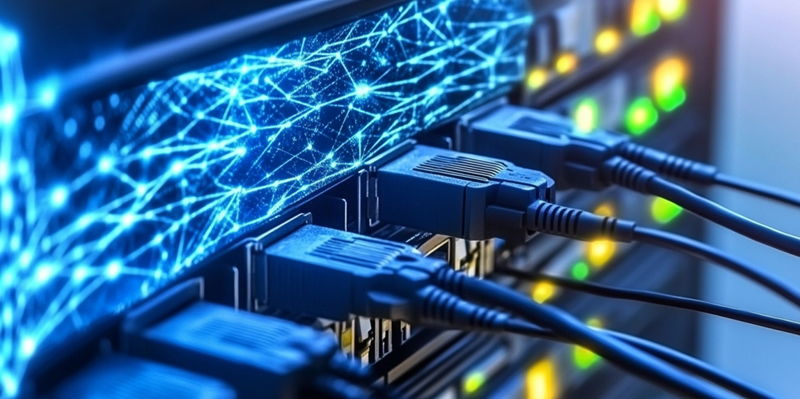In an era where connectivity defines both personal and professional spaces, the security of internet-connected devices has never been more critical. Recent developments have highlighted the possibility of large-scale cyber-attacks through accessible tools that require minimal technical expertise. Such is the case with a new distributed denial-of-service (DDoS) campaign orchestrated by a threat actor known as Matrix. Analyzing this operation, researchers from Aqua Nautilus have demonstrated how public scripts can transform a minimal skill set into a capacity for significant disruption.
Vulnerabilities in Target Devices
Exploiting Weak Passwords and Vulnerabilities
Matrix has been particularly effective in exploiting weaknesses in IoT devices and enterprise servers, focusing on routers, DVRs, IP cameras, and lightweight Linux distributions in telecom equipment. By leveraging vulnerabilities and misconfigurations, Matrix’s attack framework employs brute-force attacks and known exploits to construct a formidable botnet capable of substantial interference. One of the most alarming aspects of this campaign is its reliance on default or weak passwords. According to Aqua Nautilus, 80% of the identified credentials were tied to root or admin users, underscoring the severe risks tied to poor security practices such as leaving factory-default credentials unchanged.
The implications of such vulnerabilities are vast. By infiltrating systems with default or weak passwords, Matrix can rapidly expand its botnet, harnessing the power of numerous compromised devices to launch coordinated DDoS attacks. Impressively, the campaign has shown a potential impact on up to 35 million devices. This capacity translates to a botnet size ranging from 350,000 to 1.7 million devices based on calculated vulnerability rates, signifying a significant threat not just to individual devices but also to broader network stability.
The Transition from Cryptomining to Corporate Exploitation
The landscape of cyber threats appears to be shifting as Matrix pivots from cryptomining towards exploiting corporate vulnerabilities in tandem with IoT systems. In targeting cloud service providers, smaller enterprises, and regions heavily populated with IoT devices like China and Japan, Matrix’s campaign affects both production and development servers within enterprise environments. This shift not only maximizes the potential scale of disruption but also broadens the number of industries and regions at risk.
This transition in focus has notable implications. The traditional cryptojacking campaigns aimed at hijacking processing power for unauthorized cryptocurrency mining are becoming less prevalent. Instead, the current approach taps into the capabilities of compromised corporate environments to launch DDoS attacks, a strategy that can incapacitate critical functions within targeted organizations. Such attacks can halt operations, disrupt services, and cause considerable financial loss, thereby signaling a more sophisticated and economically damaging phase of cyber threats.
Customized Attack Tools and Monetization
Assembling Accessible Attack Tools
Matrix has mastered the art of amalgamating readily available scripts from platforms like GitHub, incorporating tools such as Mirai variants, SSH scanners, and Discord bots into bespoke attack campaigns, utilizing a mix of Python, Shell, and Golang-based scripts. This approach underscores how even actors with limited technical acumen can leverage public resources to orchestrate impactful cyber-attacks. The use of Mirai variants, in particular, is noteworthy given their notorious past associations with widespread and devastating DDoS attacks.
The customization of these tools allows Matrix to tailor its campaigns to specific targets, optimizing the effectiveness of each attack. By integrating a variety of scripts and tools, Matrix ensures that its botnet remains versatile and adaptable, capable of penetrating different types of devices and networks. This adaptive capacity is crucial, enabling the threat actor to maintain a persistent and evolving presence in the cyber threat landscape. The ease and accessibility of these tools mean that the barrier for entry into high-level cybercrime has been significantly lowered.
Monetizing DDoS Services
A crucial element of Matrix’s operation is the monetization of its capabilities. By offering DDoS plans for cryptocurrency payments through platforms like Telegram, Matrix can convert its disruptive potential into a profitable venture. This aspect of the campaign highlights the financial incentives driving such cyber-attacks and the broader economic implications of DDoS services being available for rent.
Through these plans, clients seeking to disrupt competitors or cause chaos can commission DDoS attacks without having to possess the technical know-how themselves. This outsourced cybercrime model democratizes access to powerful attack vectors, amplifying the risks across various sectors. The intersection of accessible attack tools and the ease of monetization has thus created a lucrative ecosystem for threat actors like Matrix, further exacerbating the challenges faced by cybersecurity professionals tasked with defending against such threats.
Countering Matrix’s Threats
Strengthening Security Measures
To counter the threats posed by Matrix’s campaign, a robust approach to cybersecurity is essential. Regular updates, strong credential policies, and vigilant monitoring for exposed vulnerabilities are critical in creating a defense against such sophisticated attacks. Implementing robust security measures can notably reduce the risk associated with default or weak passwords, which have been a significant vulnerability exploited by Matrix.
Organizations must prioritize changing factory-default credentials and implementing strong, unique passwords for all connected devices. Regularly updating software and firmware can patch known vulnerabilities and mitigate the risk of exploitation. Additionally, continuous monitoring of network traffic and system logs can help identify irregular activities early, allowing for swift responses to potential threats.
Adopting a Proactive Cybersecurity Stance
In today’s world, both our personal and professional lives are intricately tied to the internet, making the security of our connected devices more crucial than ever. Recent events have shown how easily large-scale cyber-attacks can be executed with accessible tools that demand minimal technical know-how. The insights provided by Aqua Nautilus serve as a stark reminder of the evolving nature of cyber threats and the importance of staying vigilant in our defense against them.

